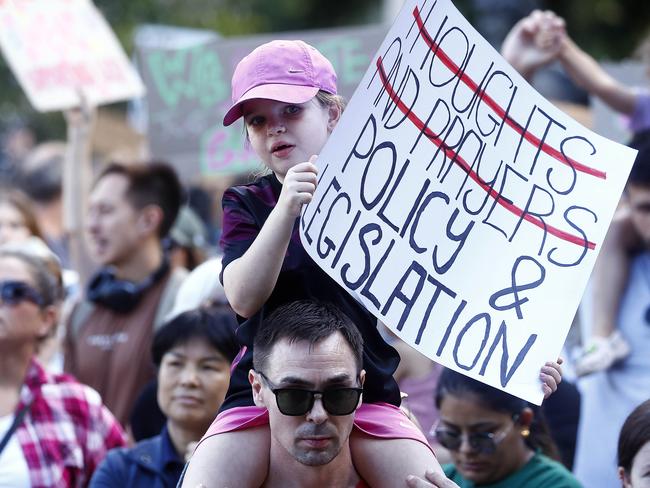James Campbell: Numbers show that home violence is a complicated matter
While a priority to investigate what can be done to stop men killing women, if Australia wants to cut the number of murders, it might also try to stop men killing men, writes James Campbell.
Opinion
Don't miss out on the headlines from Opinion. Followed categories will be added to My News.
By a strange coincidence in the week that the national conversation was largely about the issue of men killing women, the Australian Institute of Criminology released its annual update on homicide in Australia.
As you can imagine, it’s not exactly cheery reading. But it’s worth wading through as it gives a useful historic perspective, which is in danger of being lost in the current climate.
Overall there were 232 “homicide incidents” in the last financial year.
The report breaks down killings, where the relationship between killer and victim is known, into three categories: domestic of which there are 79, acquaintance (64) and stranger (34). Of the domestic, almost half – 38 – are classified as “intimate partner” killings, of whom 34 were women and four were men.
This was a big jump from the previous year, leading to website The Conversation saying: “The rate of women killed by their partners in Australia grew by 28% from 2021–22 to 2022–23”.
What it didn’t state was that the financial year 2021-22 saw the lowest number of intimate partner killings since 1989 with 35 deaths – 26 women and 9 men. Indeed, in the past 34 financial years there has only been one other – 2017-18 – in which there have been so few women killed by their partners.

The reason I point this out is not to downplay murder – obviously one killing is one too many – but to point out that when numbers are so low, it doesn’t take much change to produce big percentage jumps.
The good news is that we are all of us – men and women – far less likely to die at each others’ hands than we were in 1989-90. In that year 307 people were killed, which in a much smaller Australia translated to a homicide rate of 1.81 per 100,000, which today has dropped to 0.87 per cent. The numbers and rates of intimate partner killings have fallen during that time too.

In 1989-90 there were 60 women killed by their partners or 0.95 per 100,000 people, compared with the aforementioned 34 killings last year at the rate of 0.32 per 100,000.
Interestingly that rate – 0.32 – is lower than the 0.36 per 100,000 which was the rate at which men were likely to suffer homicide at the hands of their intimate partners in 1989-90.
Or, to put it another way, 34 years ago a man had a slightly higher chance of being killed by their partner than a woman does today.
In other words, the rate at which people kill their intimate partners has fallen massively for both sexes.
But while in women’s case it has dropped to a point where it is almost negligible – probably because it is much easier today for them to get away from them – it remains stubbornly high for men.
Why this should be so and what can be done about it is of course currently the focus of government and any money they put towards cutting it will be money well spent.
But we shouldn’t be scaring ourselves with the idea that by historic standards we are experiencing an epidemic of killing or that things are getting worse.
To put it bluntly, compared to our parents and grandparents, we are far less likely to be either killer or victim.
The other thing to note from the report is that, as has been the case forever, men are far more likely to be murdered than women.
In the past financial year there were 171 male homicide victims compared to 75 women.
That we are less interested in the men-as-victims narrative is, of course, because the overwhelming majority of these men were killed by men.
I’m not suggesting we don’t make it a priority to investigate what we can do to stop men killing women but if we want to make a bigger difference in the number of murder victims, we might also turn our minds to what we can do to stop men killing men.





